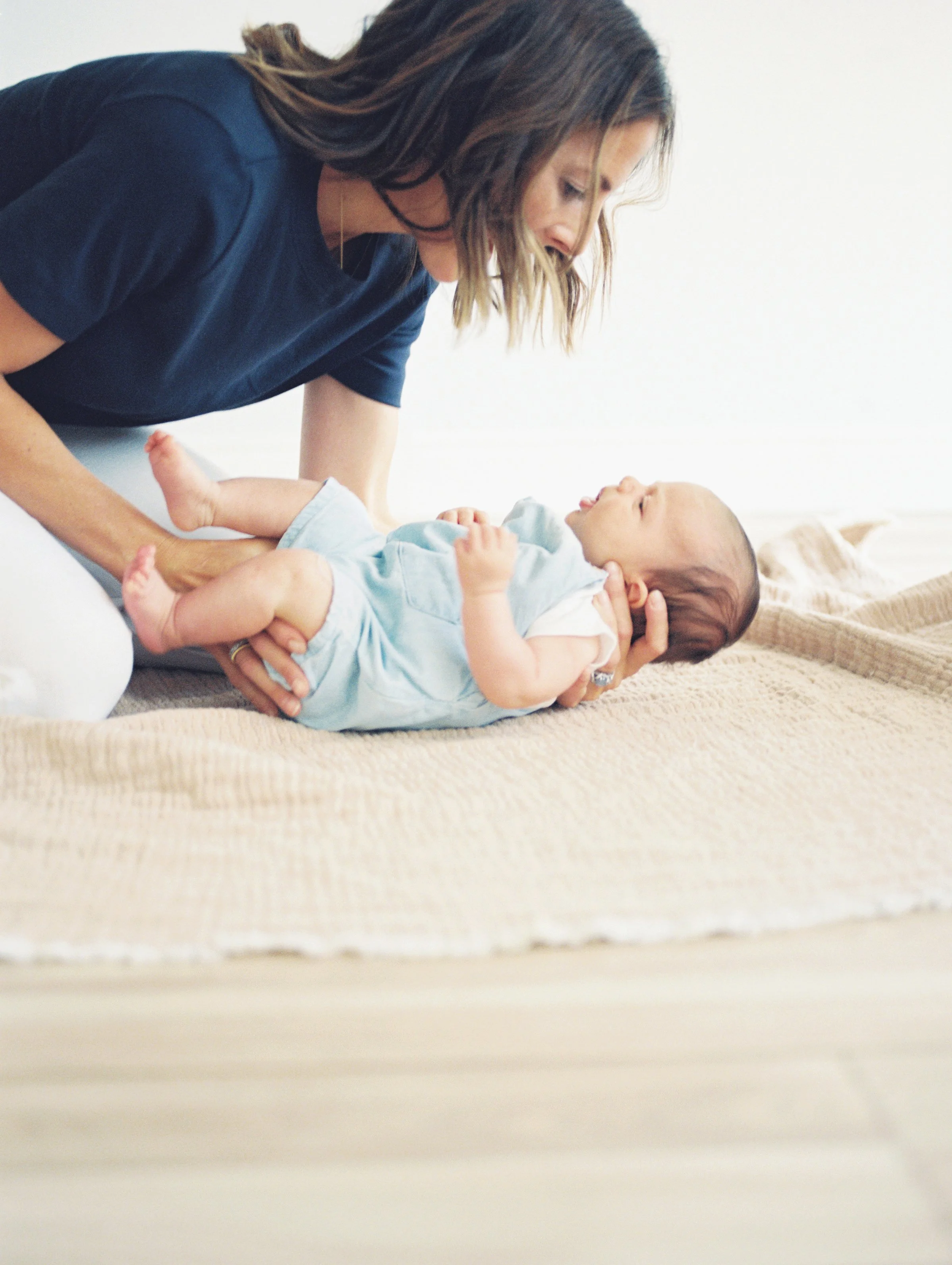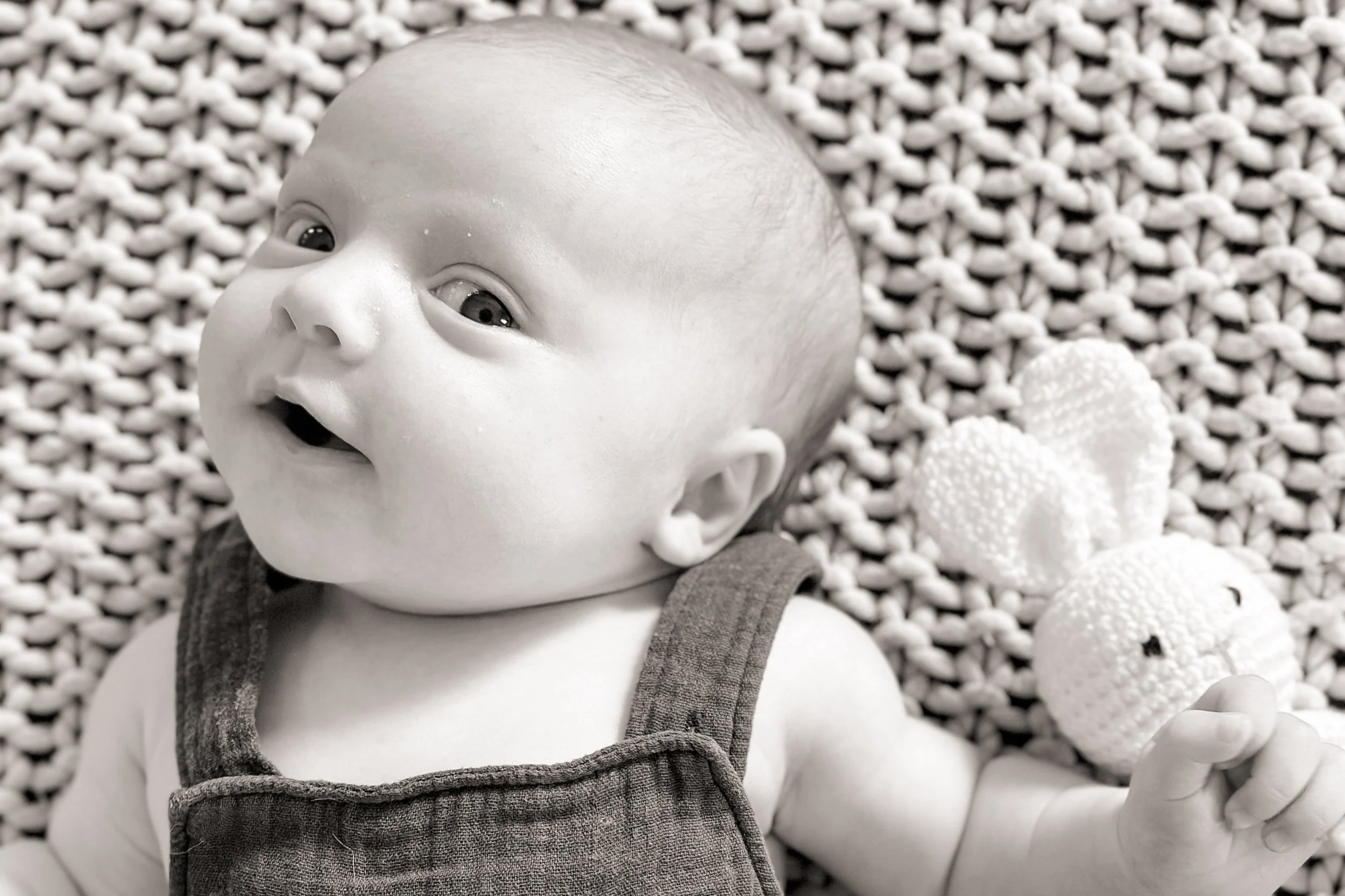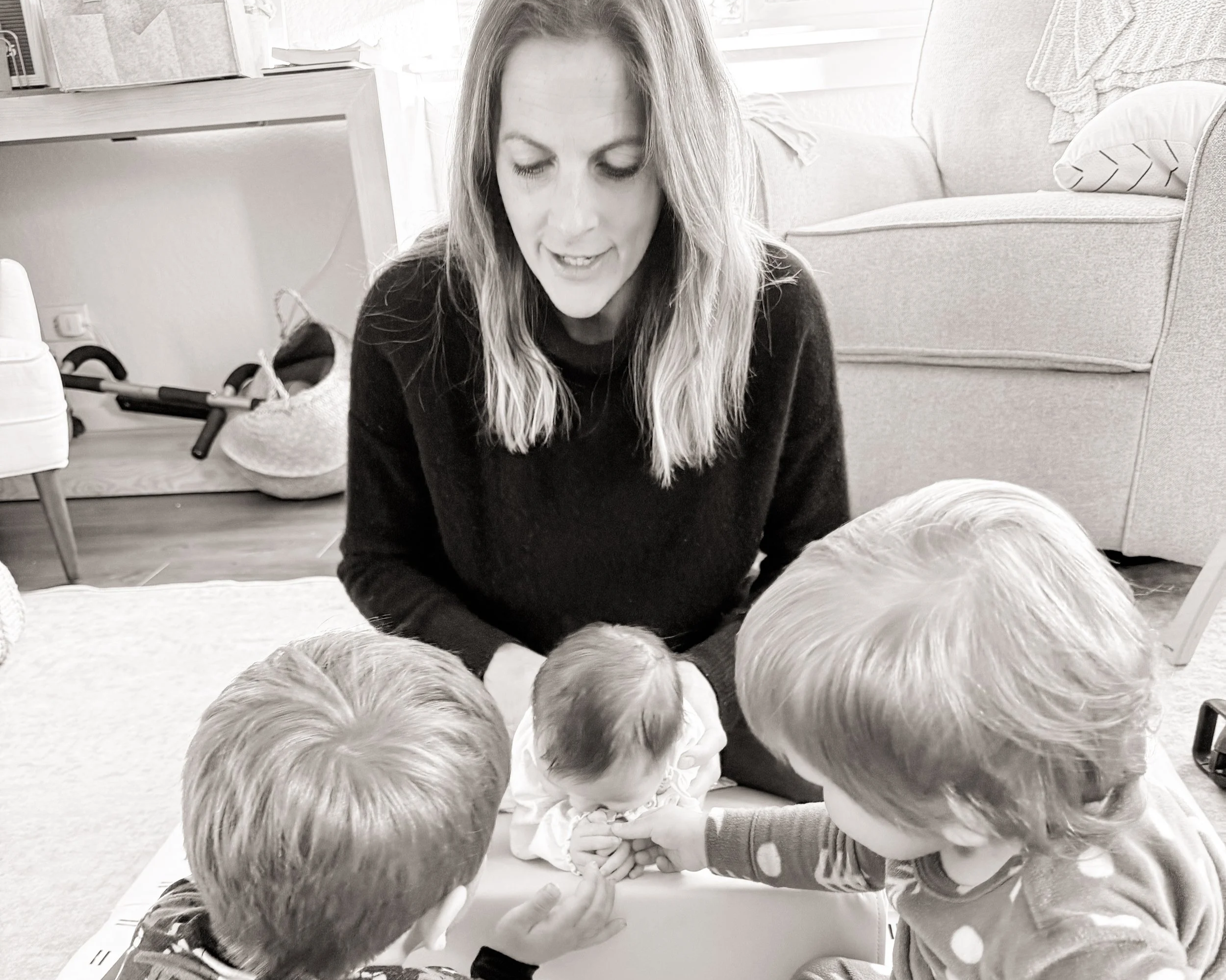Infant Development Guide (0–3 Months): Bonding, Early Skills & Milestones
Your Baby’s First 3 Months: How to Support Growth, Connection & Development
The first three months of your baby’s life are often called the “fourth trimester” — a sacred window of transition, growth, and bonding. These early weeks can feel both magical and overwhelming. You’re learning your baby, and your baby is learning about both you and the world. From the reflexive movements of a newborn to the first smile that melts your heart, every moment matters.
At Movevery, we remind parents that newborn care, baby bonding, and infant development milestones aren’t about perfection. They’re about presence, awareness, and connection. The cuddles during midnight feeds, the quiet eye contact during diaper changes, the gentle rhythm of rocking your little one — these ordinary acts are shaping your baby’s brain, body, and sense of safety in extraordinary ways.
Be Proud Of…
Every cuddle, response, and gentle word that reassures your baby.
The way your baby already calms in your arms — you are their safe place.
Those first smiles, coos, and wiggles that show connection is forming.
Look Forward To…
Hearing your baby’s laughter for the first time.
Watching their head control strengthen in tummy time.
The first time they recognize you across the room.
Let's focus on weeks 0–4 (1 Month old): Laying the Foundation
In the first few weeks, your baby is getting used to the world while practicing early reflexes and movement patterns.
Little Movements to Look For in the First Weeks:
Turning the head side to side during tummy time – with the nose still close to the surface.
Moving arms and kicking legs on both sides of the body – building strength and coordination.
Showing reflexive movements – such as grasping when something touches the palm or startling with arms and legs extending outward.
Bringing hands near the face – a comforting movement often seen even in utero.
Preferring contrast and faces visually – enjoying bold black-and-white patterns and familiar faces.
Turning the head to both sides while on the back – early practice in neck mobility and symmetry. These early milestones help your baby lay the groundwork for motor control, sensory awareness, and bonding through sight and touch.
Parent Question: How do I bond? Does skin-to-skin matter?
Bonding happens in the simple, everyday moments of connection. Your baby’s earliest sense of safety and trust is built through how you hold, comfort, and interact with them.
Face-to-face play: Hold your baby close so they can find and focus on your eyes—newborns see best from about 8–10 inches away. This eye contact is one of the earliest ways babies learn connection.
Chest-to-chest tummy time: Recline back and place your baby on your chest while they are awake. They’ll naturally lift their head to look at you, while feeling secure in your arms.
Rocking, holding, and gentle movement: These rhythms mimic the womb and help soothe your baby, while also supporting their sensory and nervous system development.
Your voice matters: Talk, hum, or sing during play. Your baby is already learning the rhythms and patterns of language while also associating your voice with comfort and safety.
Yes—skin-to-skin absolutely matters. Skin-to-skin helps regulate your baby’s body temperature, heart rate, and breathing. It reduces stress for both baby and parent, supports feeding readiness, and strengthens your emotional connection. It’s also a beautiful way to weave in tummy time early on, making it both nurturing and developmentally supportive.
What Parents Should Know
Congenital muscular torticollis (CMT)
Did you know the Academy of Physical Therapy now recommends that all babies be screened for torticollis within the first 2–3 days of life?
This simple check can make a big difference in catching early signs of tight neck muscles or head-turning preferences that may affect feeding, comfort, and development. Early screening means early support—and often, gentle exercises or positioning guidance are all that’s needed to help things stay on track.
Was your baby screened for torticollis before leaving the hospital or during their first pediatric visit? If you’re not sure, it’s a great question to bring up at your next appointment.
Let's focus on weeks 4–8 (2 months old): Awakening & Engagement
During this stage, your baby begins to show more awareness, control, and connection.
Little Movements to Look For Around 2–3 Months:
Smiling and cooing – early signs of social and emotional connection.
Lifting the head and chest during tummy time – bearing weight on elbows or forearms as head control improves.
Turning the head side to side while on the back – following sounds or familiar faces.
Bringing hands to midline – discovering their body and developing coordination.
Following moving faces, toys, or lights across midline – early eye tracking skills.
Engaging socially – cooing and smiling in response to voices or faces.
Rolling from side to back – an early sign of growing core strength and coordination.
These milestones mark your baby’s transition from the sleepy newborn phase to an interactive little explorer, eager to connect and move.
Parent Question: When do babies smile? How much tummy time is enough?
Newborns begin smiling reflexively—meaning involuntary reflex smiles—around 6–8 weeks of age. These early smiles often happen in sleep and aren’t yet connected to social interaction. By 2–3 months, babies usually begin to smile socially—responding to your face, voice, or touch.
For parents, this timing matters. After weeks of sleepless nights, round-the-clock feedings, and fatigue, seeing that very first social smile can feel like the most incredible reward. It’s your baby’s way of saying: “I know you, I see you, and I’m connecting with you.”
Tummy time is important—but it’s also just one piece of the puzzle. Babies benefit from variety throughout the day—time on their backs, sides, and tummies all support different aspects of growth and development.
Rather than stressing over an exact number, we encourage parents to aim for a little bit of tummy time during each wake window—even just a few minutes at a time. Over time, those small sessions add up to meaningful practice and strength-building.
At Movevery, we remind parents that what matters most is creating playful, connected moments—not perfection. By mixing in back play, side play, and tummy play throughout the day, you’re giving your baby a strong foundation for both movement and bonding.
Let's focus on weeks 8–12 (3 months old): Building Skills & Connection
By three months, your baby is stronger, more alert, and beginning to interact with the world in new ways.
Little Movements to Look For Around 3 Months:
Pushing up onto forearms during tummy time – lifting the chest and holding the head steady for longer periods.
Holding the head upright and steady when supported in sitting – showing improved head and trunk control.
Rolling from tummy to back – an early sign of growing core and shoulder strength.
Bringing hands to the mouth – soothing and exploring through touch and taste while building early body awareness.
Tracking moving objects with the eyes – smoothly following faces or toys across midline as vision guides head movement and strengthens neck control.
Reaching for and batting at toys – building coordination and curiosity.
Kicking legs actively and symmetrically – strengthening hips and legs for future rolling and crawling.
Smiling and cooing responsively – engaging socially and building early communication skills.
At three months, your baby is transitioning from reflexive movements to more purposeful play, signaling exciting new stages of growth and connection ahead.
Parent Question: What milestones should be achieved by 3 months? What if my baby feels delayed?
By around 3 months, many babies are beginning to:
Hold their head up during tummy time, with weight supported on their forearms
Roll from back to belly (or at least show early attempts to shift and roll)
Reach for and bat at toys placed within sight
Grasp toys actively when offered
Visually track a toy or face side-to-side while lying on their back
These early skills build the foundation for the next big milestones, like rolling both ways, sitting, and crawling. One of the most valuable ways to support your baby at this stage is to roll them into and out of tummy time, rather than just placing them on their belly. This teaches their body the stepping stones toward rolling independently, while also providing sensory input and motor planning practice.
If your baby feels delayed—or if you feel like something just isn’t quite right—please reach out for support. You can always discuss concerns with your pediatrician, and you may also want to connect directly with a trained therapist (physical therapy, occupational therapy, or speech therapy, pending the area of delay).
Reminder: In Colorado, parents have direct access to physical therapy—you don’t have to wait for a pediatrician referral to get started.
Early intervention is key. The earlier a therapist can provide guidance, the shorter and more effective the support often is. And as a parent, trust your gut. If something feels off, it’s always worth asking.
At Movevery, we believe no question is too small when it comes to your baby’s development. We’re here to help you feel confident and supported every step of the way.
Dr. Nicole’s Top Tip: “Milestones aren’t boxes to check. Every smile, coo, and gaze is proof of your baby’s safety and love.”
Common Newborn Worries: What Parents Often Ask in the First Weeks
Is it normal that my newborn cries every time I put them down?
It can be normal for newborns to cry when they’re put down—they’ve just spent nine months being held in the womb, so being on their own can feel unfamiliar. Often this is part of the adjustment period in the early weeks.
That said, persistent crying can sometimes be related to deeper needs. Discomfort, tension patterns, or feeding and digestive challenges may all play a role. While your pediatrician can help rule out medical concerns, a skilled therapist and lactation support can work together to improve your baby’s comfort—releasing tension, supporting feeding, and even easing issues like colic or sensitivity to certain positions.
At Movevery, we help parents understand what their baby might be communicating and provide gentle strategies so being put down doesn’t feel so overwhelming for either of you.My baby hates tummy time — will this cause delays?
If your baby hates tummy time, it doesn’t automatically mean they’ll experience delays—but it does mean they’re trying to tell us something. Babies communicate through their bodies and behaviors, and resistance to tummy time can be a signal of discomfort.
Some common reasons include:
Gas or constipation — lying on the belly can feel uncomfortable because of increased abdominal pressure.
Rigidity or body tension — tightness can limit ease of movement and lead to prolonged nervous system dysregulation or sensitivity to certain positions.
General discomfort — your baby may not find this position comfortable yet and might need a little extra support or modification.
If your baby consistently resists tummy time, it’s worth reaching out for support. A skilled pediatric therapist can be another set of eyes to help uncover why tummy time feels so hard. Together, we can release tension, provide gentle stretches, and teach positional and play strategies so tummy time becomes less of a battle and more of a positive, connected experience.
At Movevery, we believe tummy time shouldn’t feel stressful for parents or babies. With the right support, it can become an enjoyable stepping stone toward growth and milestones.How do I know if my baby is eating or sleeping enough?
Every baby is unique, and what’s “enough” can look different from one little one to the next. In the early weeks, it’s common to wonder if your baby is feeding or sleeping as much as they should.
When it comes to feeding, the best next step is to work closely with your pediatrician and lactation support. They can help you track weight gain, diaper counts, and feeding cues to make sure your baby is getting the nourishment they need.
At Movevery, we focus on how feeding and sleep connect with movement. If tension patterns or discomfort are making it harder for your baby to settle, we can help support their body so eating and sleeping come more naturally.What if my baby hasn’t smiled yet? Should I worry?
Every baby develops on their own timeline, and first smiles can show up a little earlier or later for different little ones. Many babies begin smiling socially around 2–3 months, but some may take a bit longer.
If your baby hasn’t smiled yet and you’re starting to worry, the best step is to discuss your concerns with your pediatrician. They can help you determine whether your baby is simply on their own timeline or if additional support might be helpful. In the meantime, keep nurturing connection—make eye contact, sing, and play—as these interactions encourage social development and bonding.
At Movevery, we remind parents that milestones are important, but they’re also flexible. You know your baby best—if something feels off, it’s always worth asking for support.What if my baby only looks in one direction?
If your baby is consistently looking in just one direction, it may be a sign of torticollis (tightness in the neck muscles). The American Physical Therapy Association’s Clinical Practice Guidelines recommend that all newborns be screened for torticollis within the first 2–3 days of life, since early detection typically improves treatment speed and outcomes.
Looking in both directions is important for so many aspects of development. It supports healthy vision development by allowing babies to track and explore their world equally on both sides. It helps with reflex integration and gives the nervous system the input it needs to organize those early reflexes. It also lays the foundation for milestone development—rolling, reaching, and crawling all depend on balanced movement. And equally important, it prevents flat spots from forming on one side of the head.
If you notice your baby only looking in one direction, it’s best to reach out to a skilled pediatric therapist for support. With gentle interventions and positioning strategies, we can help restore comfort and symmetry so your baby can move, see, and grow with ease.
At Movevery, we believe in catching concerns early—so your baby’s milestones feel natural, not stressful.



